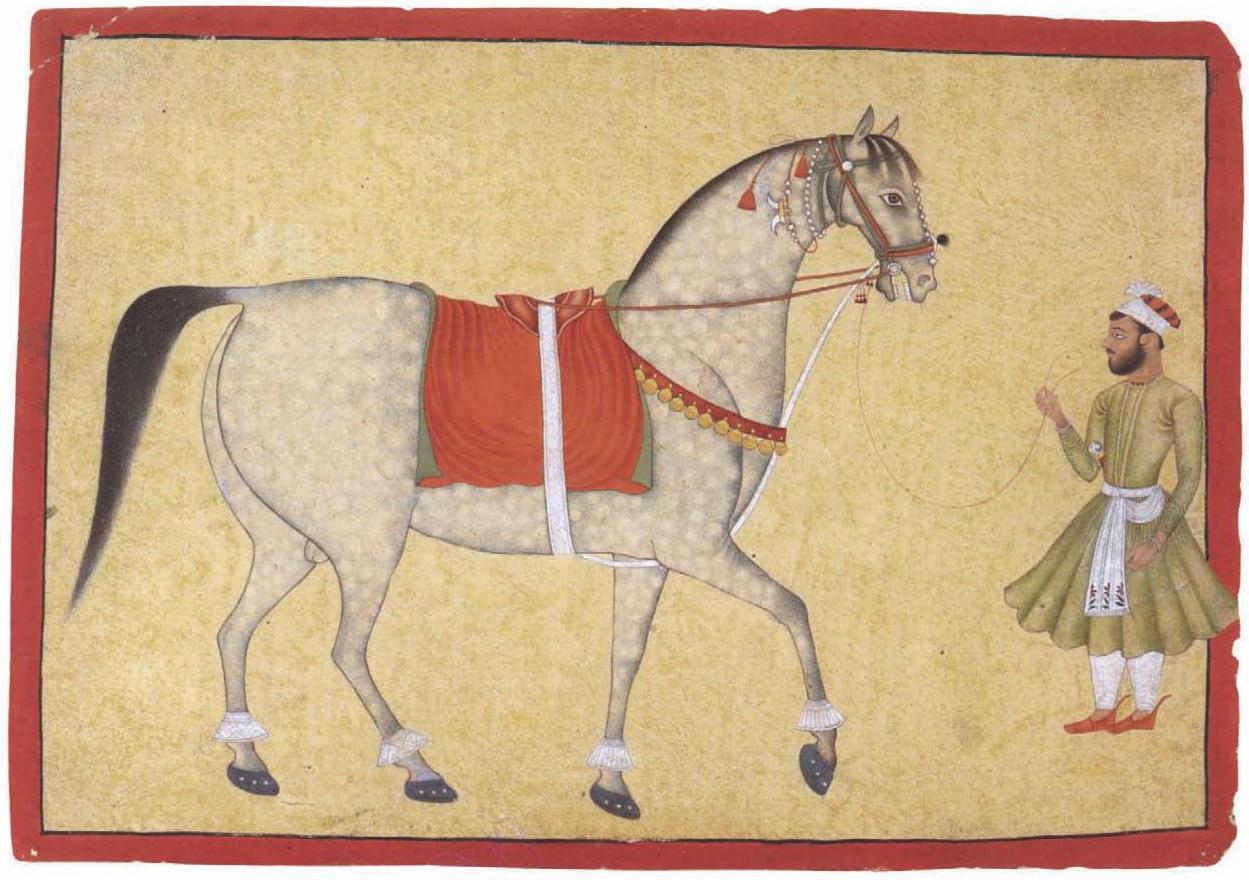
Try Amazon Audible Plus
Royal Horse and his Groom
Bundi, Rajasthan, India, c.1640.



A ROYAL HORSE WITH HIS GROOM
Rajasthan: Bundi, ca. 1640
Ink and opaque watercolor on paper
6¾ x 9½ in. (17.1 x 24.2 cm)
The Kronos Collections
The Bundi painting tradition was one of the earliest to be directly inspired by Mughal prototypes. That influence can be seen in the highly specific descriptive detail that makes this not a generic representation but the portrait of a particular horse, his restless spirit tellingly conveyed. However, the red border, unmodulated yellowish background, and dynamic line evoke traditional Hindu painting, as does the relatively shallow space. Although the colors are softer than those of the earlier Rajput tradition, they are still applied mainly in flat areas. The drawing line is more controlled and more varied than it was earlier. Dynamic line was to become one of the hallmarks of the related Bundi and Kota schools; it is interesting to note its early appearance here. This portrait is constructively compared with the Akbari paintings of a prince riding an elephant and a horse with a runner (cat. nos. 9, 10).
Source: p.38, Indian Court Painting, 16th-19th Century by Steven Kossak
via Metropolitan Museum of Art, New York